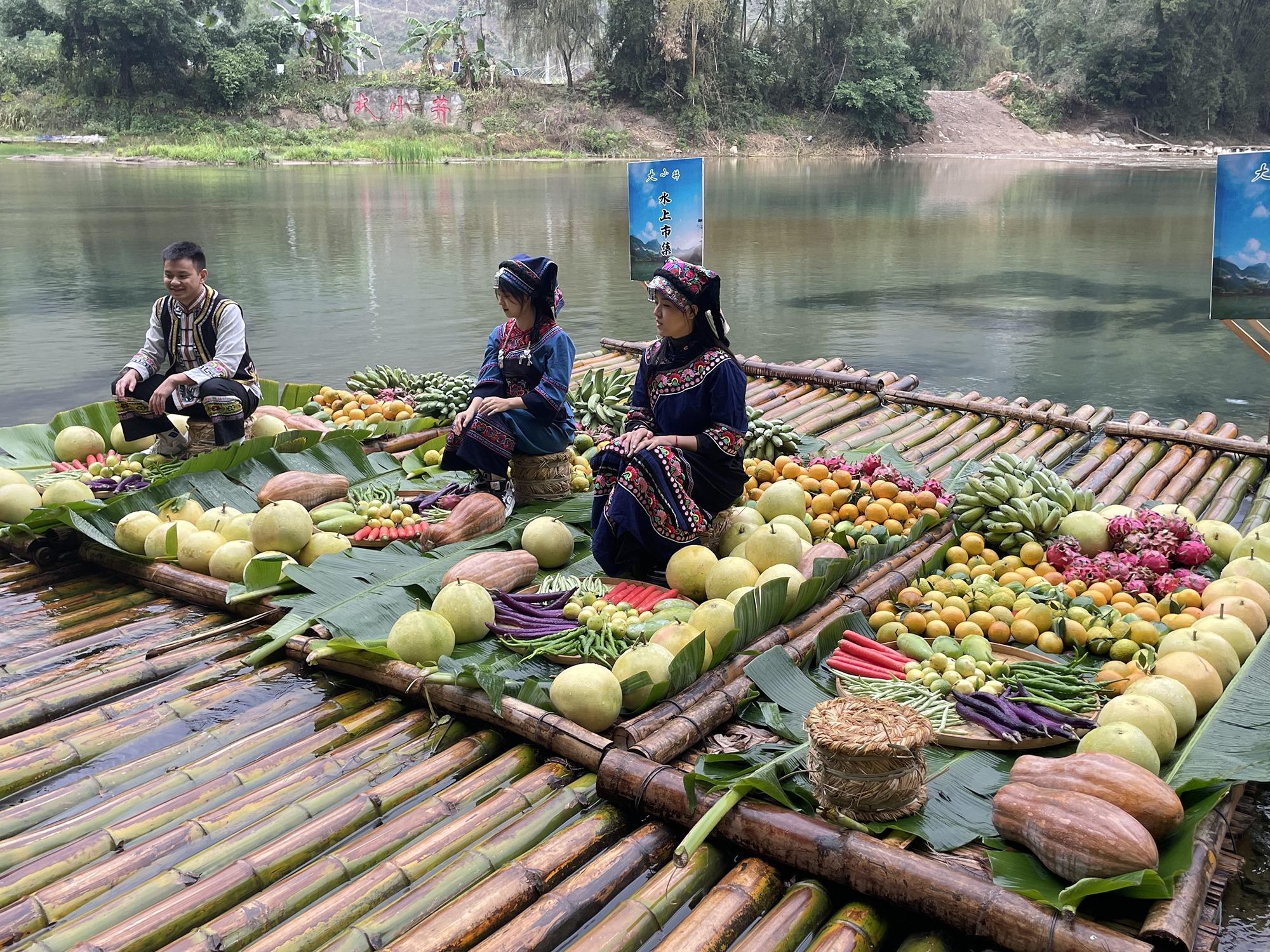 The floating market at Luodian's Daxiaojing scenic spot in Guizhou province. (PHOTO PROVIDED TO CHINA DAILY)
The floating market at Luodian's Daxiaojing scenic spot in Guizhou province. (PHOTO PROVIDED TO CHINA DAILY)
As the cold November air wraps provinces in the upper north of China in the shimmering white and gray blanket of its chilly embrace, the southern border of Guizhou province unveils a contrasting vibrant canvas that sets it apart from other places during the winter season. Nestled between rolling hills and away from bustling streets, this region offers a smorgasbord of natural wonders.
Landing in Xingyi, the county-level city in the Qianxinan Bouyei and Miao autonomous prefecture in the southwest of Guizhou province, visitors are greeted by the silhouette of a string of verdant peaks, enveloped in a thin veil of fog, offering a unique view of Wanfeng Forest, which lies less than 9 kilometers away.
Aptly named "forest of ten thousand peaks", Wanfeng Forest proudly holds the title of China's largest peak forest, featuring a typical karst landscape and covering an impressive area of 2,000 square kilometers, spanning more than 200 kilometers in length and up to 50 kilometers wide.
Standing atop one of its many majestic summits leaves sightseers captivated by the awe-inspiring view.
The forest houses a marathon running track that extends all the way into a colorful wonderland, the Sunshine Valley Tourist Resort. As winter casts its magic spell, breathtaking hues abound at every turn of the path, which is bordered by maple trees with vibrant red caps. Whether it's the lush greenery, the serene purple of the lavender fields, or the vibrant yellow of rape flowers, this stunning vista creates a vivid palette of natural splendor.
Venturing further east along the province's south border to Luodian and Libo in Qiannan Bouyei and Miao autonomous prefecture, winter's imprint seems to leave no trace. At Luodian's Daxiaojing scenic spot, lush banyan trees and foliage-covered mountains form an endless ocean of green, lining the banks of crystal-clear rivers which flaunt vibrant shades of turquoise.
The tranquil, jade-like surface is occasionally broken by bamboo rafts carrying not only locals and tourists, but also a floating market. Dragon fruit, navel oranges, passion fruit, and other assorted vegetables are all neatly displayed on banana leaves, presenting a feast for the eyes as well as a mouth-watering treat for the taste buds.
"We live near water and the weather is a bit hot, so, in order to keep the fruit fresh and preserve it longer, we put it close to the water where the temperature is lower, and when the sun comes out, the fruit can be covered with banana leaves," explains one of the vendors.
Likewise, in Libo's Xiaoqikong scenic area, winter graces its landscape by blanketing it in an emerald tapestry. The majestic Laya Waterfall and 68-level Drop Waterfall cascade down the mountainside, the water splashing against the rock and bursting into shiny beads kissed by the sunlight. Xiaoqikong Bridge, the ancient stone bridge with seven arches, and which dates back to 1835, spans the turquoise Xiangshui River. A boatman skillfully removes fallen green and yellow leaves scattered on the river with a fishing net. As tourists gather around and hold their phones and cameras in position, he stamps to make the boat sway from side to side, which leaves two long, ever-expanding turquoise ripples wrinkling the reflection of the bridge. When the sun filters through the branches of evergreen trees and casts its tender rays on the river, the flowing jade instantly starts to shimmer like sparkling diamonds.
As nature pauses to rejuvenate, the unparalleled winter kaleidoscope in southern Guizhou offers an opportunity for visitors to pause alongside it. In the arms of a winter that is not so icy here, nature's colorful embrace remains ever enchanting.
Li Hezi contributed to this story.


